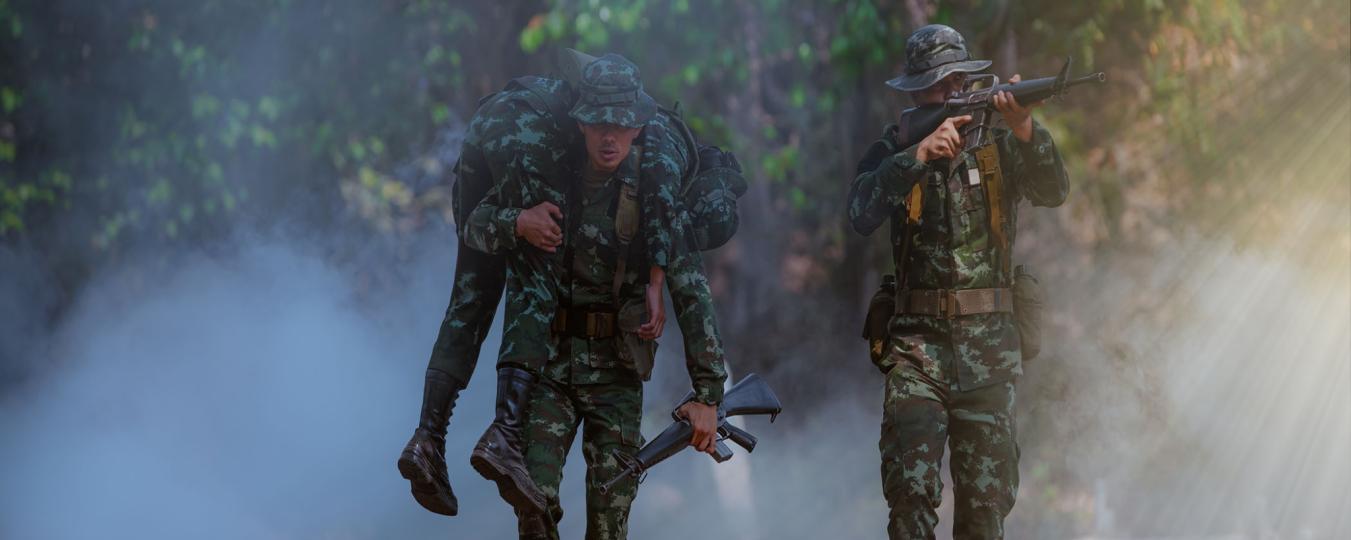IEDs Create Devastating Wounds That Leave Many Service Members Unable to Have Biological Children
The rising use of improvised explosive devices (IEDs) has resulted in thousands of service members emerging from combat zones without working sex organs or any chance of having biological children, according to a new study from Rutgers.
Researchers who analyzed the U.S. Department of Defense Trauma Registry found that 7.2 percent of hospitalized service members had wounds to their genitals and urinary system wounds. The most frequently injured organs were the scrotum (60 percent), testes (53 percent), penis (30 percent) and kidneys (30 percent).
IEDs and other explosives created nearly two-thirds of these devastating injuries.
“The shift from enemies shooting you from above to bombing you from below, along with the improvement in upper-body armor, has led to a shift in injury patterns,” said Shane Kronstedt, a doctoral degree candidate in Robert Wood Johnson Medical School’s class of 2023 and first author of the study, published in the Journal of Urology. “These injuries are rarely fatal, but they are often traumatic, both in the moment and forever after.’’
Kronstedt saw many such injuries firsthand as a Navy SEAL medic and hopes the new analysis will improve protection against and treatment for such injuries. He is studying to become a urologic surgeon to address health issues he became aware of during his service. (See story on Kronstedt’s experiences.)
Although 94 percent of patients survived until discharge, 35 percent of those who sustained urological injuries required large blood transfusions. Urological injuries accounted for 28 percent of all massive blood transfusion protocols between 2007 to 2020, as they are typically seen as part of a component of a large and severe polytrauma.
According to studies of previous conflicts, injuries to the genitals and urinary tract system historically comprised as little as 2 percent of combat-related injuries, but numbers rose sharply during the post- Sept. 11, 2001 actions in Afghanistan and Iraq. Kronstedt’s earlier analysis of service member casualties from 2001 to 2013 showed 5.3 percent of male casualties survived with one or more such injuries.
Deployment patterns over the study period resulted in male soldiers suffering 98 percent of these injuries. Most of those who sustained genital and urinary system injuries also suffered injuries to their limbs, most often their legs. Additional injuries to the abdomen (38 percent), thorax (21 percent) and head and/or neck (13 percent) were also common.
“There are things service members can do to decrease their risk,” Kronstedt said. “There is a type of pelvic body armor called blast trousers, but it’s hard to get people to wear them because they’re heavy and bulky. They reduce the severity of injuries when you’re hit, but there’s a belief that they slow you down enough to impair your performance in combat.”
“There’s been more progress on armoring vehicles. When service members first arrived in Afghanistan and Iraq, they used Humvees, which are very vulnerable to IEDs,” he said. “They have since replaced the Humvees with armored vehicles called MRAPs, which are much better armored.”
Looking forward, Kronstedt said he hopes to study the long-term physical and mental effects that serious combat-related genitourinary injuries have on service members.
“We don’t have any data yet on how people cope with these injuries when they return to civilian life and which treatments and therapies provide the best long-term outcomes,” Kronstedt said.
Media Contact
Andrew Smith
[email protected]




